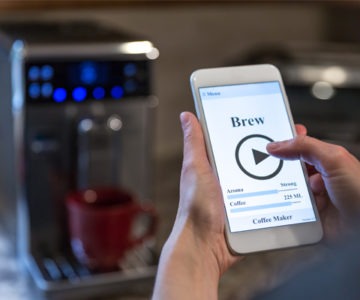This is how to save money using the Internet of Things
 Wearable tech, smart homes, cars, and speakers – the words on everyone’s lips are to do with the ‘Internet of Things’ (IoT), and the possibilities are extraordinary. Put simply, the ‘Internet of Things is about connecting devices over the internet which allows them to talk to us, applications, and each other. It encompasses everything from simple sensors to smartphones and wearables. The IoT has the potential to reduce costs for your business and increase efficiency in the workplace. In fact, a study by logistics service provider DHL and IT firm Cisco predicts that the IoT will save businesses $1.2 trillion in productivity costs alone. Here’s how:
Wearable tech, smart homes, cars, and speakers – the words on everyone’s lips are to do with the ‘Internet of Things’ (IoT), and the possibilities are extraordinary. Put simply, the ‘Internet of Things is about connecting devices over the internet which allows them to talk to us, applications, and each other. It encompasses everything from simple sensors to smartphones and wearables. The IoT has the potential to reduce costs for your business and increase efficiency in the workplace. In fact, a study by logistics service provider DHL and IT firm Cisco predicts that the IoT will save businesses $1.2 trillion in productivity costs alone. Here’s how:
Overheads
The cost of overheads quickly mounts for any business but the IoT provides a way to save money on these necessities. Smart thermostats can detect how many people are in a room or if the room is empty, and adjust accordingly. Joe Costello, CEO of a Silicon Valley energy technology company called Enlighted, said his company’s clients are cutting their lighting bills by 60% to 70% and cutting heat and air conditioning bills by 20% to 30% thanks to smart-building technologies.
Marketo found that 51% of the world’s top global marketers expect IoT to revolutionise the marketing landscape by 2020
Marketing
Imagine if you could fully understand your customers and how they consume products. Well you can with the IoT. Data created by IoT devices – such as wearable tech – gives businesses an insight far better than expensive market studies. This could also lead to personalisation in marketing, a more welcoming approach. Research collated by marketing automation platform Marketo found that 51% of the world’s top global marketers expect IoT to revolutionise the marketing landscape by 2020. It predicts marketers will be able to use IoT to analyse customer’s behaviour, gather previously unobtainable data, gain deeper insights into where a customer is in the buying journey; provide real-time point-of-sale notifications and targeted ads; and quickly resolve issues to close sales and keep customers happy.
Healthcare
More and more people are starting to collect their own health data through devices such as smart watches, and this is very beneficial for the healthcare sector. By using smart sensors, healthcare professionals can remote monitor patients, saving appointment times for more urgent cases. IoT devices can collect a range of metrics from blood sugar readings to heart rates. Lifestyle data such as sleeping patterns and exercise levels can also be recorded to help healthcare practitioners to make recommendations.
Payments
For retailers, IoT could transform the current status quo. There can be nothing quite as frustrating than the payment process – for customers and businesses – in shops and restaurants. This process could be transformed in eateries, by customers registering when they arrive using smartphone pay systems. Customers then pay automatically when they order their food through a device, and the system sends them an e-receipt when they leave. Another irritant for many are pay-and-display car parks – how frustrating is it when you have no coins or just simply can’t predict how long you will be? IoT sensors can be used to track how long your car is parked for stays and a bill generated once you leave.
A revolution is coming…
This is just the very beginning of the Internet of Things. In the near future, you could soon be using smart mirrors to try on clothes in shops and own a fridge that orders groceries automatically when they run out. Watch this space. Discover how SCC can turn your workplace digital